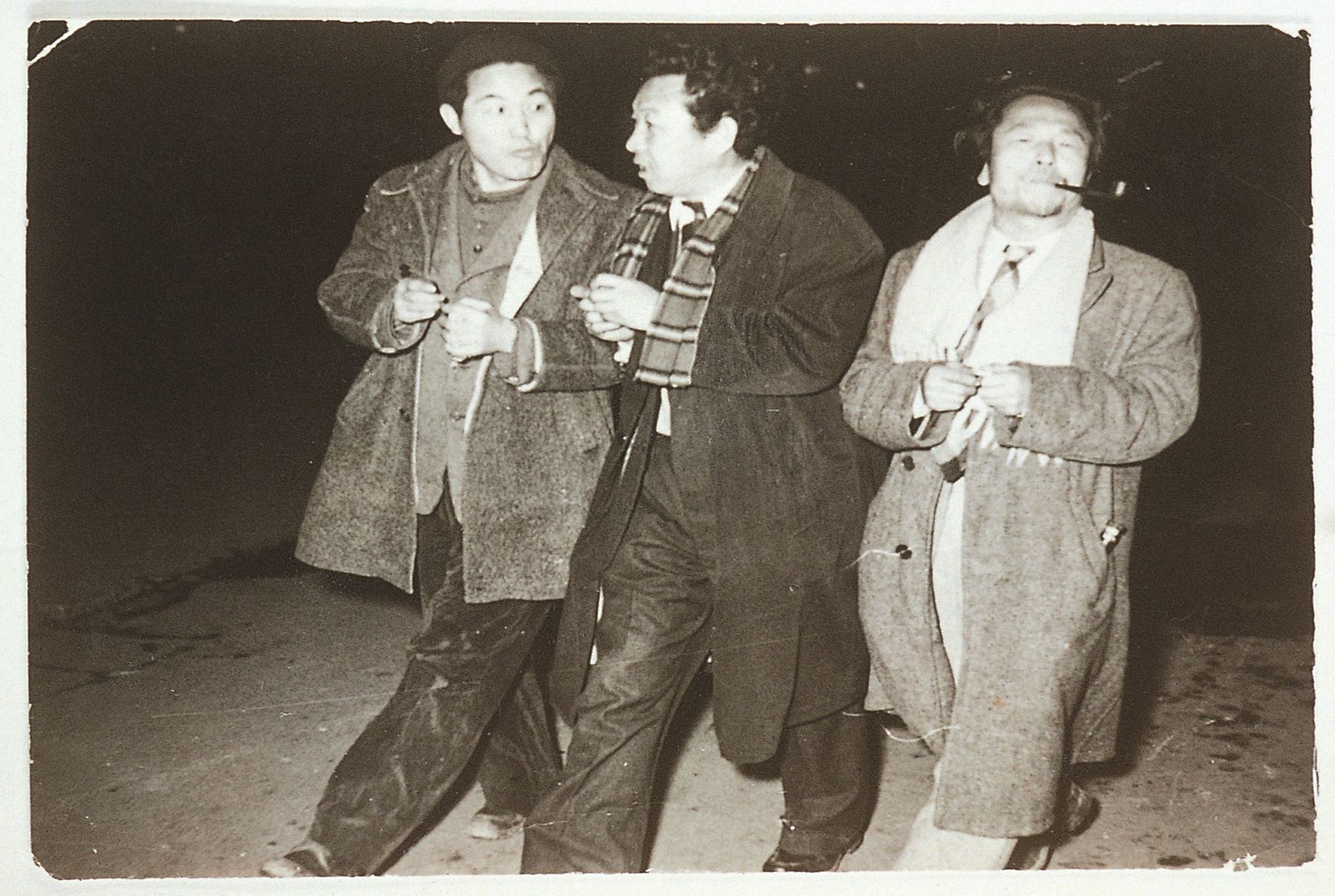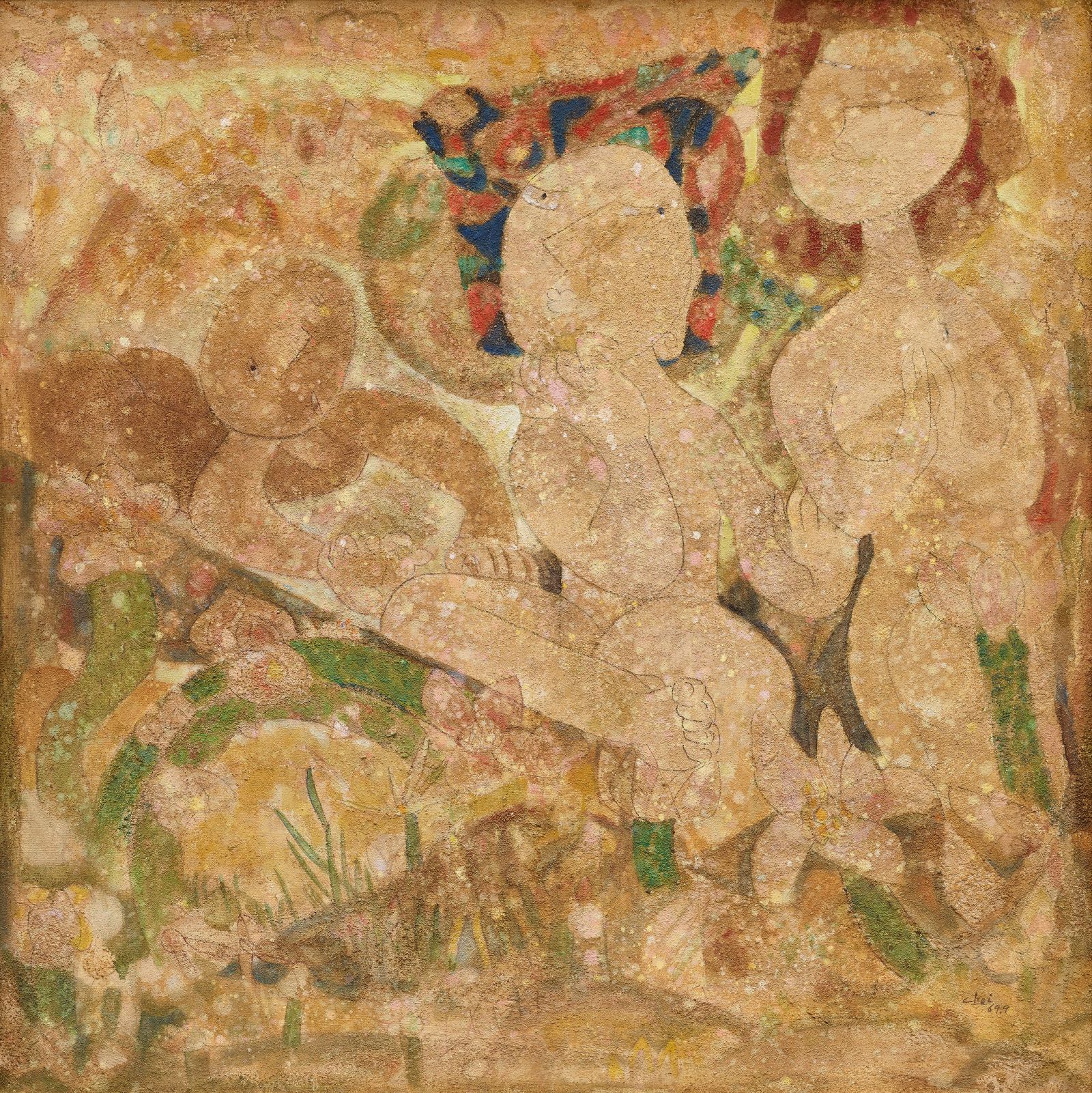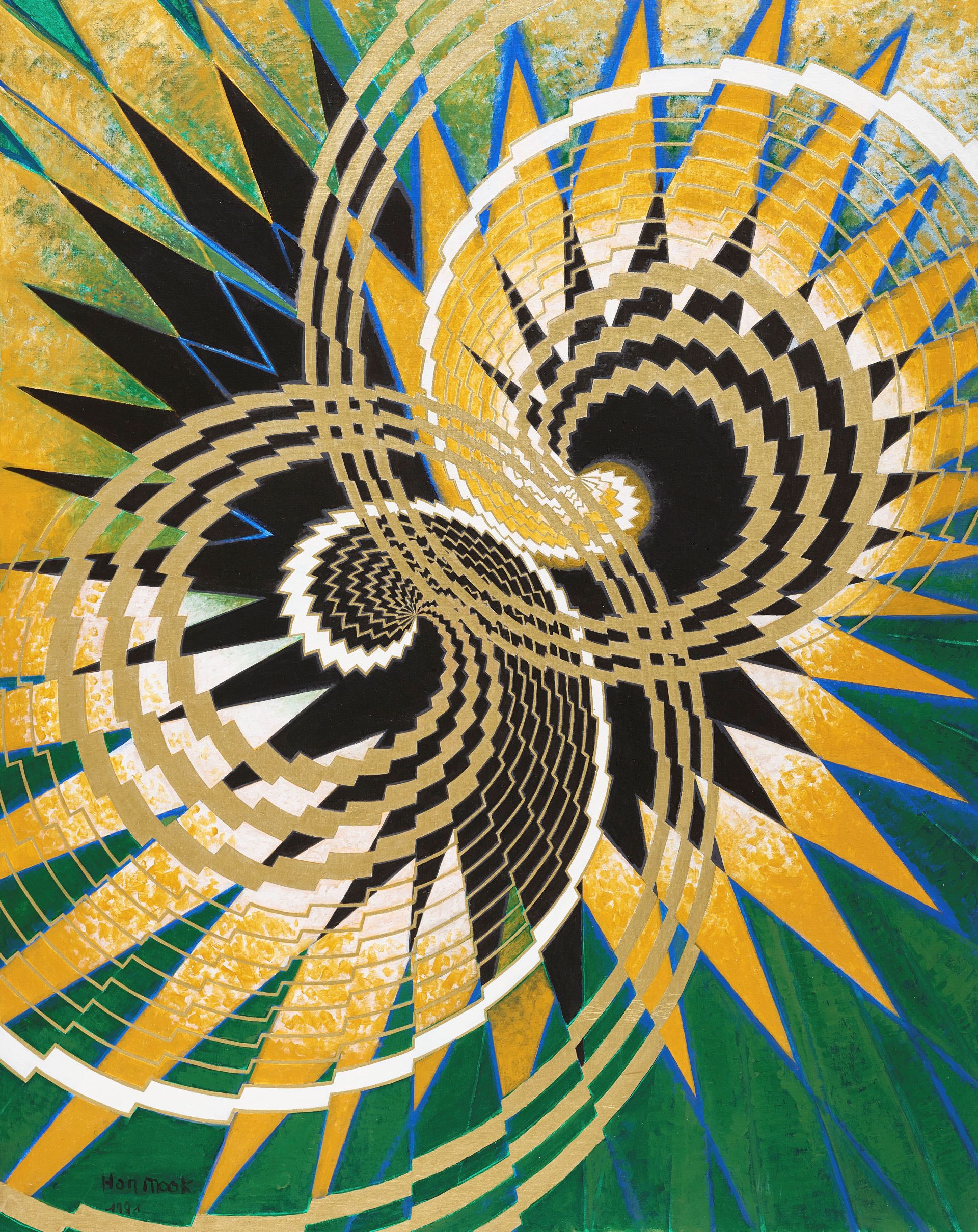
Slide of Lee Jungseop, Park Kosuk, and Han Mook Walking the Streets of Busan at Night During the First Gijohoe Exhibition, 1952, MMCA Art Research Center Collection, Gift of Kim Boggi
Wolnam Artists Association
* Source: Multilingual Glossary of Korean Art by Korea Arts Management Service
Related
-

Choi Youngrim
Choi Youngrim (1916-1985) was the first son of a wealthy Oriental medicine pharmacist in Pyongyang. He joined a small art community at Gwangseong High School in Pyongyang and submitted a print to the Japanese Print Association. An oil painting of his was selected for the Joseon Art Exhibition [Joseon misul jeollamhoe] in 1935 and several more were selected through 1943. After independence, he participated in the National Art Exhibition (Gukjeon), the Creative Art Association Exhibition, and the Figurative Art Exhibition, and taught as an art professor at the College of Fine arts at Chung-Ang University. He simplified and reconfigured geometric objects using black outlines and flat planar forms in the 1950s. In the 1960s, he switched to color painting, with motifs from traditional folklore, such as Shimchung or The Story of a Tiger, and developed a painting technique of colourful painting by spreading oil on the canvas. He depicted primitive and innocent Utopian landscapes using the simple shades of ochre, and a soft smearing texture, often featuring round and voluptuous nude figures within.
-

Chung Kyu
Chung Kyu (1923-1971) was born in Goseong, Gangwon-do. He graduated from Gyeonggi Public Commercial School in 1941 and moved to Japan to attend the Department of Western Painting at Teikoku Art School. He returned to Korea in 1944 and stayed in Busan during the Korean War, moving to Seoul to be a researcher at the Korean Visual Art Research Institute from 1954 to 1962. He studied prints and ceramics in Rochester, New York, USA on a one-year invitation from the Rockefeller Foundation. After he came back, he expanded his art from painting to prints and ceramics. He was a founding member of the Korea Art Critics Association in 1956, the Korea Prints Association [Hanguk panhwa hyeophoe] in 1958, and the Korean Art Critics Association in 1960. He established the Institute of Korean Traditional Ceramics Craft in 1960. He contributed his prints to the Contemporary Art Exhibit sponsored by Chosun Ilbo and created ceramic murals at Oyang Building and Namsan Liberty Center, leaving an important mark on the development of public art in Korea. He worked as an art lecturer at Ewha Woman’s University from 1955 to 1961, at the department of craft, Hongik University from 1960 to 1963, and as a professor of the Department of Ceramics at Kyung Hee University from 1963 to 1971.
-

Lee Jungseop
Lee Jungseop (1916-1956, pen name Daehyang) was born in Pyongyang. He learned oil painting from Yim, Gilbert Pha at Osan School, Jeongju. He attended the Teikoku Art School in Japan in 1936 and moved to the Bunka Gakuen to learn oil painting in 1937. During his school years, he submitted his work to Japan Free Artists Association [Jiyū bijutsuka kyōkai] in 1938 and to the New Artists’ Association [Sin misulga hyeophoe] Exhibition. After his return to Korea in 1943, he was active in Wonsan and moved to South Korea with his family after the outbreak of the Korean War. He sought shelter in Busan and Seogwipo but had to send his Japanese wife and two sons back to Japan in June 1952 due to financial difficulties. He submitted work as a war correspondent painter. He orchestrated solo exhibitions in Tongyeong in 1953 and Midopa art gallery in Seoul and for the United States Information Service Center at Daegu in 1955. He died at a Red Cross hospital in 1956 after suffering from malnutrition and liver cirrhosis. His works, such as White Ox, illustrated local subject matter and family life with a simple touch, and one of his drawings on silver foil was purchased by the Museum of Modern Art in New York. A high-profile posthumous exhibition in 1972 at Hyundai Hwarang greatly increased the popularity of his work among the general public.
Find More
-

War Artists Corps
An organization formed after the outbreak of the Korean War. Its parent organization was the Bureau of Troop Information and Education of the Ministry of Defense. After the outbreak of the War, the organization was formed in Daegu by art teachers from each school. Once Seoul was recaptured by the South, artists based in Seoul joined and the association expanded. The military artist group consisted of multiple groups, divided by region—Daegu, Busan, and Gwangju—and military branches—Navy, Air Force, and Army. The military artist group was the headquarters that oversaw all these groups. The war painters held over 10 war documentary painting exhibitions over the course of the Korean War. The first was the Military Artists Prop Exhibition of the Ministry of Defense, which was held in March 1951 at the Bureau of Public Information in Daegu. The last exhibition was held in May 4, 1953.
-

Han Mook
Han Mook (1914-2016, pen name Mook, real name Han Baekyu, Japanese name Momoda), was born in Seoul and moved to Manchuria in 1932. He studied painting at the Ogwahoe Art Research Institute in Dalian and started to create his own works. In 1935, he moved to Japan, and studied at Kawabata Art School. After he returned to Korea in 1944, he taught at Geumgang Middle and High Schools in Goseong. When the Korean War broke out, he fled to Busan in 1951 and returned to Seoul in 1953, where he taught at Osan Middle and High Schools. He taught as an art professor at Hongik University in 1955 and led the foundation of the Modern Art Association in 1957. To concentrate on his creative practice, he departed to Paris in 1961 and studied etching at Atelier 17 in 1971. He died in Paris in 2016. Mook explored the gradation from figuration to non-figuration, and during the 1960s, he created works based on pure vertical and horizontal compositions while also using collage techniques and strong matiere. In the 1970s, he created many etched and abstract geometric works in acrylic, that represented the interlocking time and space of the universe in concentric circles and radiation. Since the mid-1980s, narrative and formative elements began to dominate within his work as he investigated the theme of introspection. He also created calligraphy, drawing, and collage works on traditional Korean Hanji paper and cloth.






